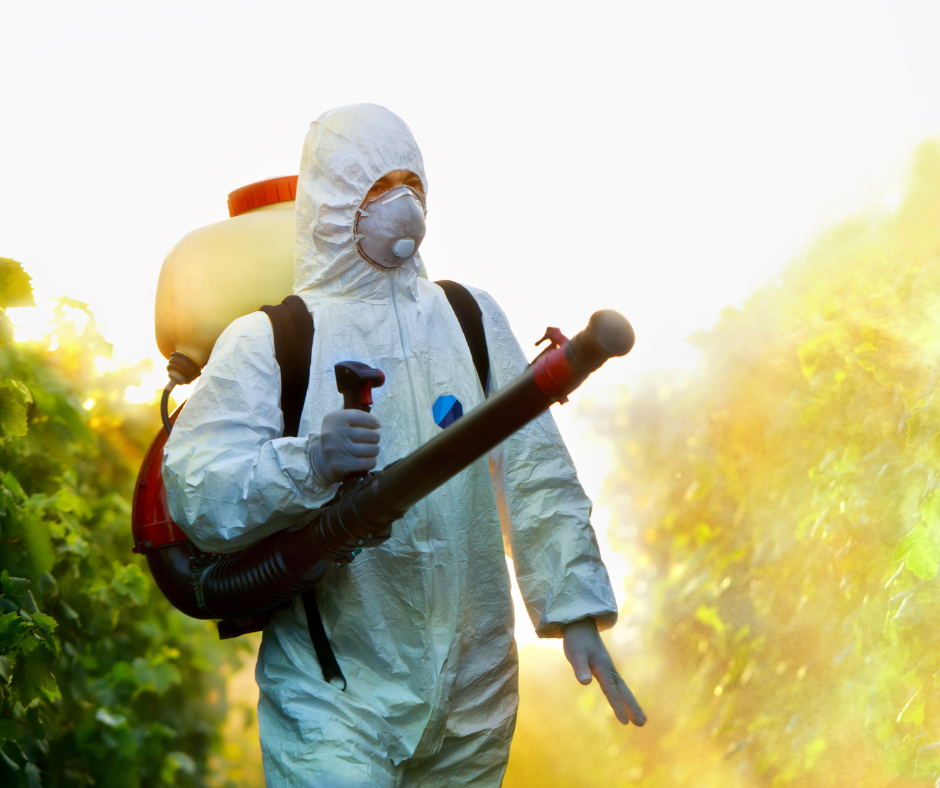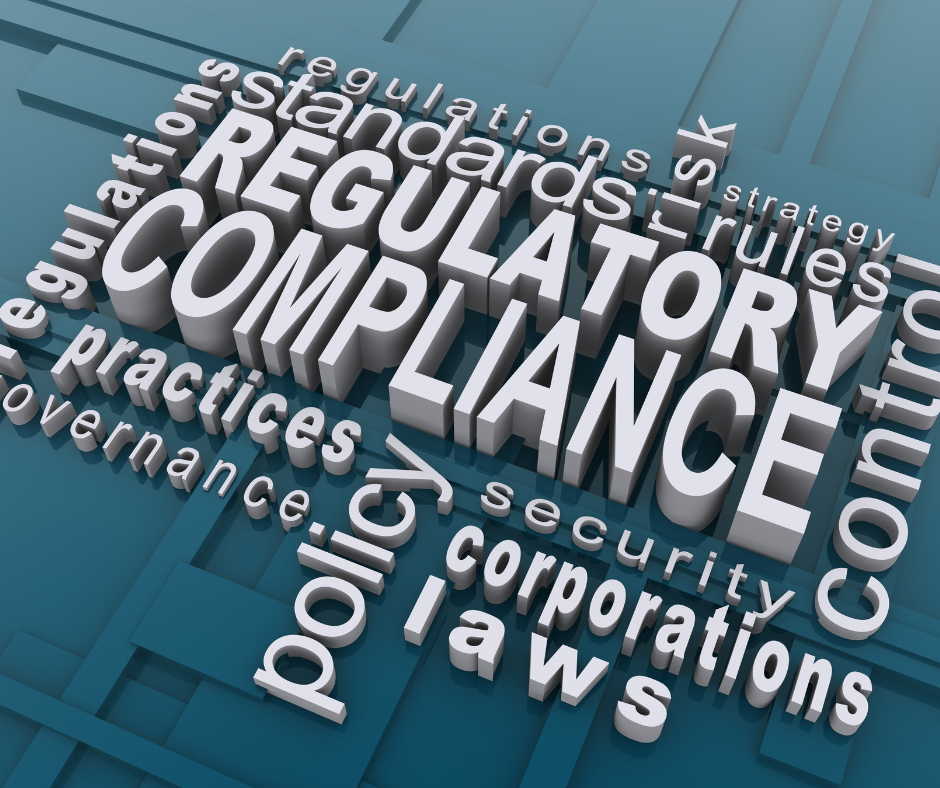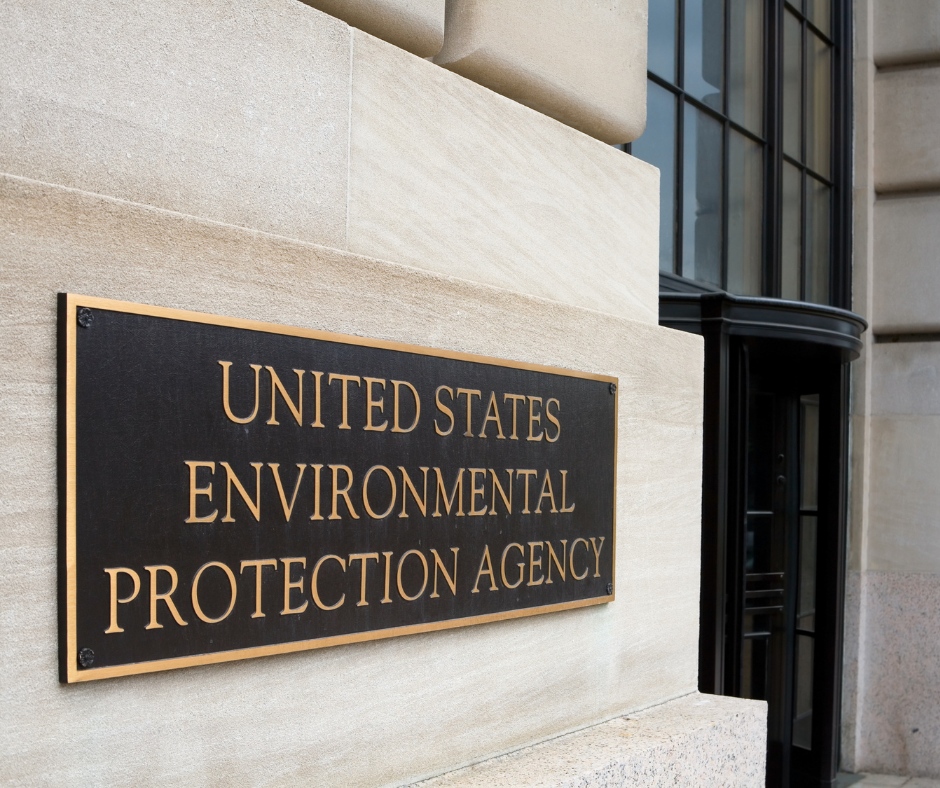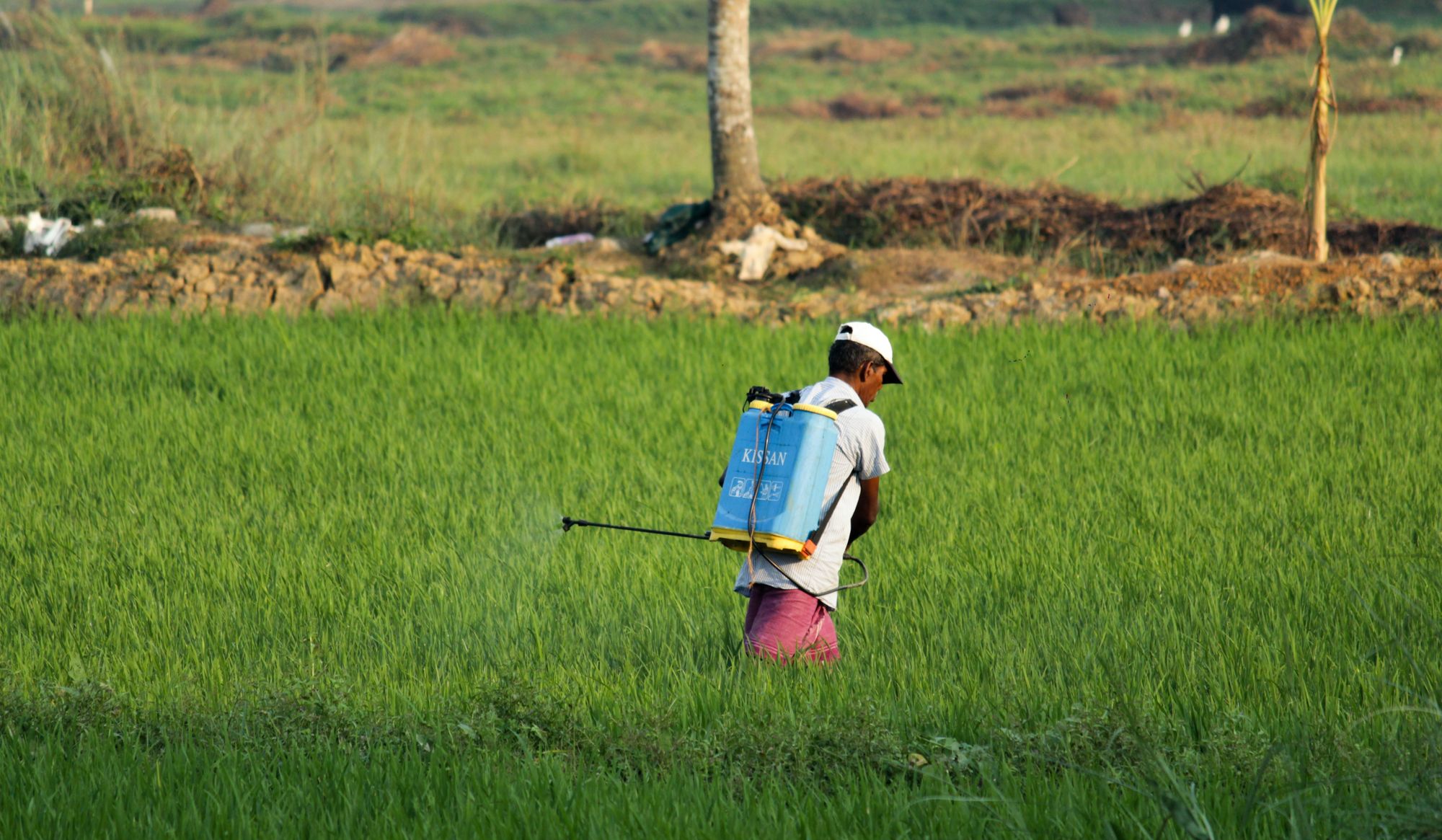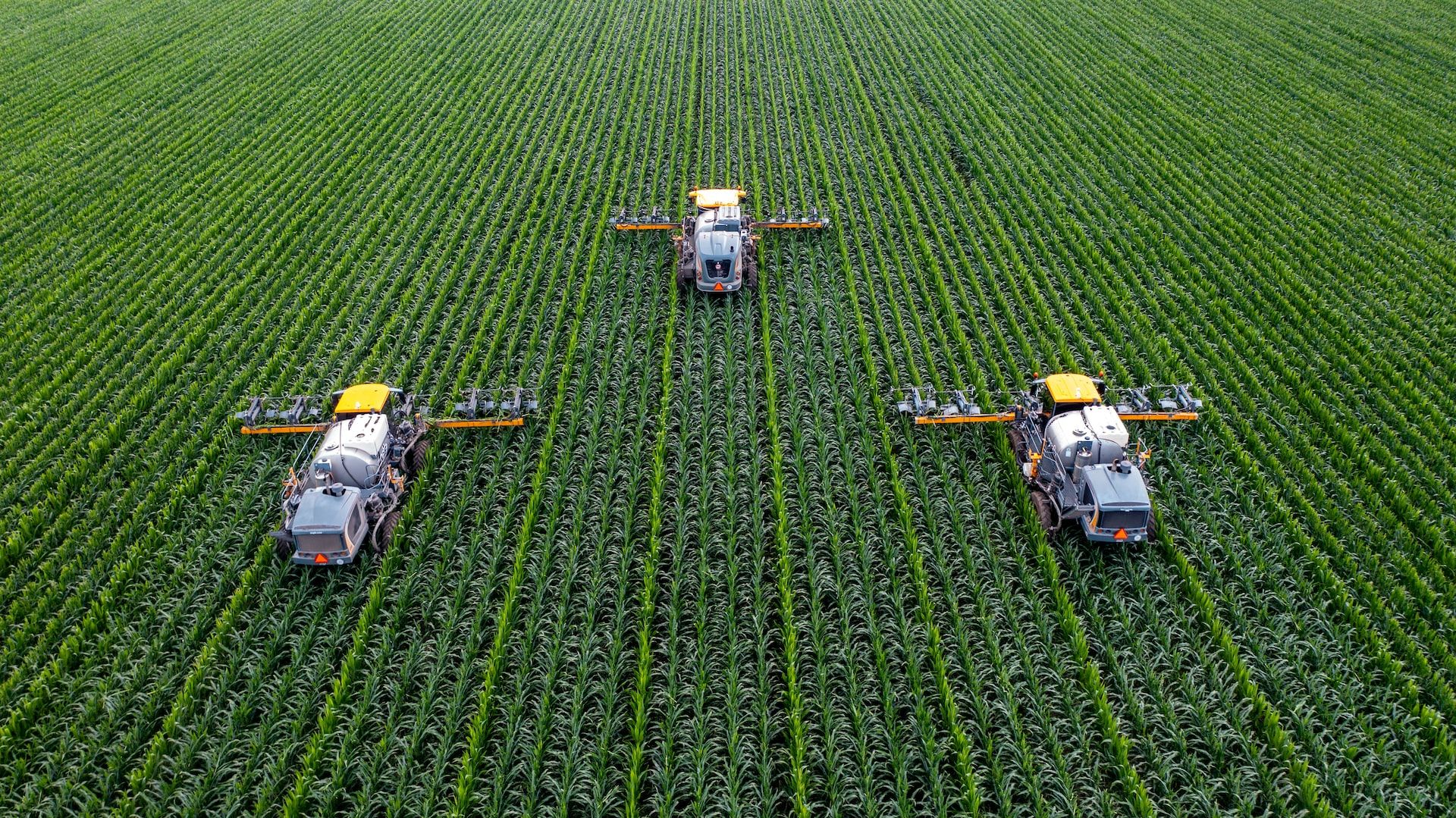Do you ever find yourself feeling overwhelmed when it comes to pest control? It seems like there are just too many options out there! And it can be hard to know which one is the most effective. That's where this guide comes in. We'll take a look at the different types of pest control chemicals and help you decide which one is best for your needs.
There are a number of options available when it comes to pest control, but each has its own set of benefits and drawbacks. Understanding these factors can help you choose the right product for your needs.
The goal of this guide is to help you identify the different types of pests and select an appropriate pest control chemical. By doing this, you'll be able to get the most effective results while avoiding any potential harmful side effects. So whether you're dealing with ants, fleas, or spiders, we've got the answers you're looking for.
- Meaning of Pest Control Chemicals?
- Importance of Pest Control Chemicals
- Top Common and Effective Pest Control Chemicals
- Precautions that Need to be Taken While Using Pesticides?
- Choosing the Right Pest Control Chemical
- Toxicity of Pesticides
- Frequently Asked Questions (FAQs) Associated with Pest Control Chemicals
- Wrapping Up
- How Deskera Can Assist You?
Let's get started!
Meaning of Pest Control Chemicals?
Pest control chemicals, also known as pesticides, are chemical substances that are used to control, eliminate, or repel pests such as insects, rodents, weeds, and fungi. These chemicals can be synthetic or natural and are typically designed to target specific types of pests.
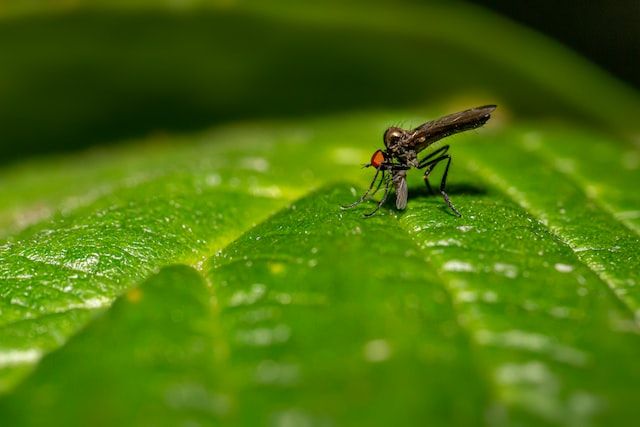
Furthermore, pest control chemicals are widely used in agriculture, public health, and residential settings to protect crops, control disease transmission, and improve human health and comfort.
However, the use of these chemicals should be done safely and responsibly to avoid negative impacts on the environment and human health.
Importance of Pest Control Chemicals
Pest control chemicals play an important role in protecting crops, livestock, and humans from the harmful effects of pests.
In agriculture, pest control chemicals are used to protect crops from pests that can cause damage and reduce yields. It further helps to ensure a stable and reliable food supply.
By controlling pests, farmers can also reduce the need for manual labor and increase efficiency in crop production. In public health, pest control chemicals are used to prevent the spread of diseases carried by insects and rodents, which can have significant impacts on human health. For example, insecticides can be used to control mosquitoes that transmit diseases such as malaria, dengue fever, and Zika virus.
In residential settings, pest control chemicals are used to control pests that can be harmful to human health and comfort, such as cockroaches, ants, and bed bugs.
Pest control chemicals are also used to control invasive species that can cause damage to crop, wildlife, and ecosystems. While pest control chemicals have many benefits, their use should be done safely and responsibly to avoid negative impacts on the environment and human health.
It is important to follow proper safety precautions, use appropriate equipment, and follow government regulations. It is because it helps to ensure that the use of pest control chemicals is effective and does not pose unnecessary risks to the environment and human health. Careful application of pest control chemicals can help ensure their effectiveness while minimizing potential risks.
Common and Effective Pest Control Chemicals
Following, we’ve discussed some of the common and most effective pest control chemicals. Let’s learn:
Abamectin
Abamectin is a widely used insecticide and acaricide that is effective against a wide range of pests, including mites, aphids, and other insects. It is derived from the soil bacterium Streptomyces avermitilis and is a member of the avermectin family of compounds.
It works by interfering with the nervous system of insects and mites, leading to paralysis and death. It is typically used in spray or bait formulations, which can be applied directly to pests or to areas where pests are likely to be found.
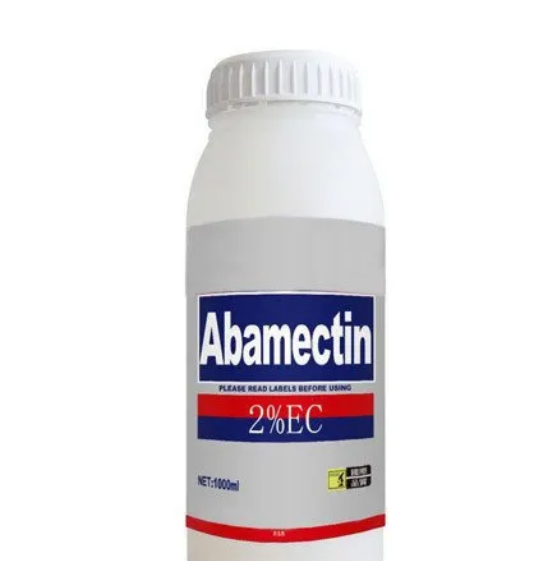
Abamectin is considered to be relatively safe for humans and pets, as it has low toxicity and is rapidly metabolized by the body. However, it is important to use abamectin safely and responsibly to avoid negative impacts on the environment and human health.
One concern with the use of abamectin is the potential for the development of resistance in pest populations. Overuse or improper use of these chemicals can lead to the selection of pest populations that are resistant to the chemicals, reducing their effectiveness and leading to the need for higher doses or different chemicals.
Additionally, abamectin can have negative impacts on non-target organisms such as bees, fish, and birds. It is important to follow label instructions and use these chemicals only as directed to minimize the potential for environmental harm.
Overall, abamectin is an effective and relatively safe tool for controlling pests, but its use should be carefully managed to avoid negative impacts on the environment and human health, as well as the development of resistance in pest populations. It should be used as part of an integrated pest management program that includes other control methods as well.
Fipronil
Fipronil is a broad-spectrum insecticide that is commonly used in pest control. It belongs to a class of chemicals called phenylpyrazoles and is effective against a wide range of pests. This includes ants, termites, fleas, ticks, and cockroaches.
Fipronil works by disrupting the nervous system of insects, leading to paralysis and death. It is typically used in bait formulations, which are attractive to pests and contain a lethal dose of the chemical. When pests consume the bait, they become poisoned and die.
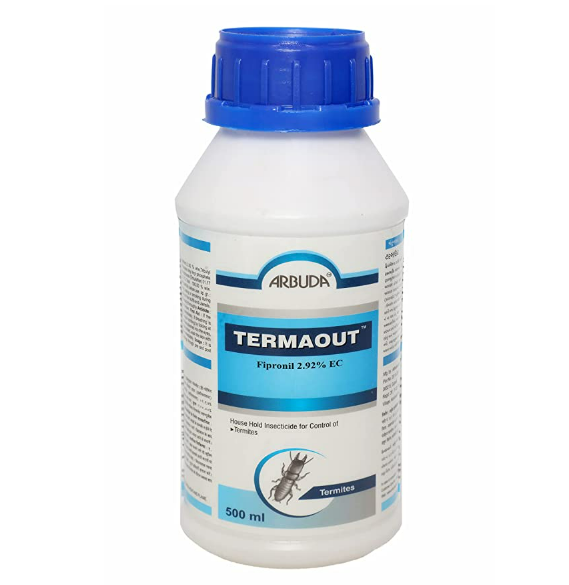
Fipronil is considered to be a highly effective insecticide, with low toxicity to mammals and birds. However, it is important to use fipronil safely and responsibly to avoid negative impacts on the environment and human health.
Moreover, excessive use of fipronil or other insecticides can lead to the development of resistance in pests, which can reduce the effectiveness of the chemical and lead to the need for higher doses or different chemicals.
Additionally, fipronil has been associated with negative impacts on bees and other pollinators, which are essential for the health of ecosystems and agriculture. For this reason, many countries have restricted or banned the use of fipronil and other neonicotinoid insecticides in certain applications to protect pollinators.
Overall, fipronil is a powerful and effective tool for controlling pests, but its use should be carefully managed to avoid negative impacts on the environment and human health.
Hydramethylnon
Hydramethylnon is an insecticide that is commonly used for controlling a variety of ant species. It belongs to a class of chemicals called chloronicotinyls and is known for its slow-acting and non-repellent properties.
Furthermore, hydramethylnon works by disrupting the metabolism of insects, leading to their eventual death. It is typically used in bait formulations, which are attractive to ants and contain a lethal dose of the chemical. When ants consume the bait, they carry it back to the colony, where it is shared with other ants, leading to the eventual elimination of the colony.
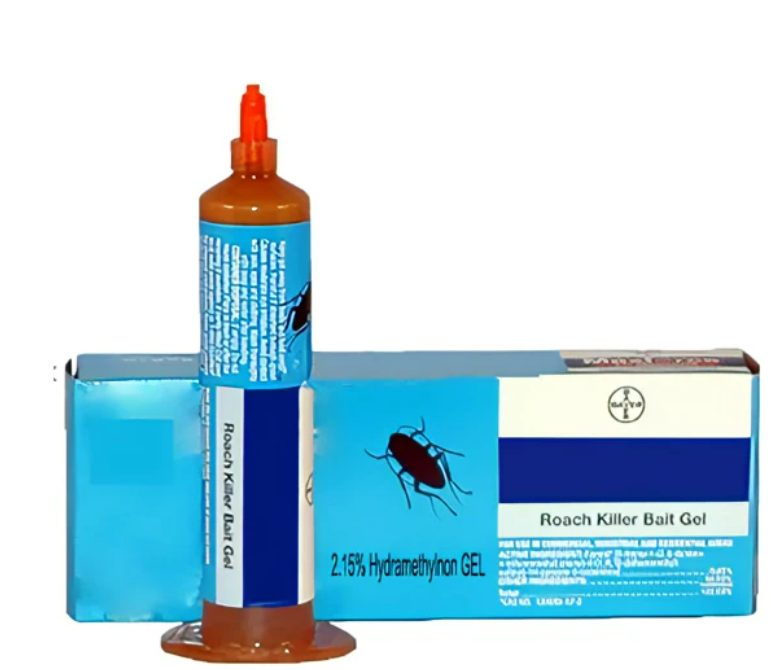
Hydramethylnon is considered to be relatively safe for humans and pets, as it has low toxicity and is not highly absorbed through the skin. However, it is important to use hydramethylnon safely and responsibly to avoid negative impacts on the environment and human health. It is also important to ensure that the bait is placed in areas inaccessible to children and pets.
One concern with the use of hydramethylnon is the potential for the development of resistance in ant populations. Overuse or improper use of the chemical can lead to the selection of ant populations that are resistant to the chemical, reducing its effectiveness and leading to the need for higher doses or different chemicals.
Overall, hydramethylnon is an effective and relatively safe tool for controlling ant populations, but its use should be carefully managed to avoid negative impacts on the environment and human health, as well as the development of resistance in ant populations.
Pyrethrins & Pyrethroids
Pyrethrins and pyrethroids are a group of insecticides that are widely used for pest control. Pyrethrins are natural insecticides derived from the chrysanthemum flower, while pyrethroids are synthetic versions of pyrethrins that are more stable and long-lasting.
Furthermore, pyrethrins and pyrethroids work by disrupting the nervous system of insects, leading to paralysis and death. They are effective against a wide range of pests, including mosquitoes, flies, ticks, fleas, and bed bugs. They are typically used in spray formulations, which can be applied directly to pests or to areas where pests are likely to be found.
Pyrethrins and pyrethroids are considered to be relatively safe for humans and pets, as they have low toxicity and are rapidly metabolized by the body. However, it is important to use these chemicals safely and responsibly to avoid negative impacts on the environment and human health.
One concern with the use of pyrethrins and pyrethroids is the potential for the development of resistance in pest populations. Overuse or improper use of these chemicals can lead to the selection of pest populations that are resistant to the chemicals, reducing their effectiveness and leading to the need for higher doses or different chemicals.
Additionally, pyrethrins and pyrethroids can have negative impacts on non-target organisms such as bees, fish, and birds. It is important to follow label instructions and use these chemicals only as directed to minimize the potential for environmental harm.
All in all, pyrethrins and pyrethroids are effective and relatively safe tools for controlling pests, but their use should be carefully managed to avoid negative impacts on the environment and human health, as well as the development of resistance in pest populations.
Boric Acid
Boric acid is a commonly used insecticide and pest control agent that is effective against a variety of insects, including ants, cockroaches, and termites. It is a naturally occurring compound that is derived from boron, a mineral found in rocks and soils.
Furthermore, it works by interfering with the metabolism of insects, leading to their eventual death. It is typically used in powder or dust formulations, which can be applied directly to pests or to areas where pests are likely to be found.
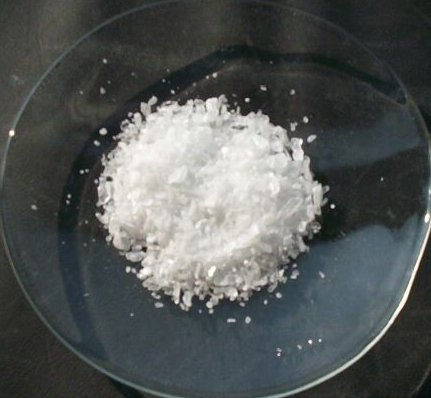
Boric acid is considered to be a relatively safe insecticide, as it has low toxicity to humans and pets. However, it is important to use boric acid safely and responsibly to avoid negative impacts on the environment and human health. It is also important to ensure that the powder or dust is placed in areas inaccessible to children and pets.
One advantage of using boric acid for pest control is its long-lasting effects. Unlike many other insecticides that break down quickly, boric acid can remain effective for several months or even years if applied properly.
Additionally, boric acid has low potential for the development of resistance in pest populations. This is because it works by a different mechanism than many other insecticides, and pests are less likely to develop resistance to its effects.
Ultimately, boric acid is an effective and relatively safe tool for controlling a variety of pests, but its use should be carefully managed to avoid negative impacts on the environment and human health. Proper application and placement are key to its effectiveness, and it should be used as part of an integrated pest management program that includes other control methods as well.
Carbamates
Carbamates are a group of insecticides that are widely used for pest control. They work by inhibiting the activity of an enzyme that is important for nervous system function in insects, leading to paralysis and death.
These are effective against a wide range of pests, including insects, mites, and ticks. They are typically used in spray or dust formulations, which can be applied directly to pests or to areas where pests are likely to be found.
Carbamates are considered to be relatively safe for humans and pets. It is generally because of their low toxicity and are rapidly metabolized by the body. However, it is important to use carbamates safely and responsibly to avoid negative impacts on the environment and human health.
One concern with the use of carbamates is the potential for the development of resistance in pest populations. Overuse or improper use of these chemicals can lead to the selection of pest populations that are resistant to the chemicals, reducing their effectiveness and leading to the need for higher doses or different chemicals.
Additionally, carbamates can have negative impacts on non-target organisms such as bees, fish, and birds. It is important to follow label instructions and use these chemicals only as directed to minimize the potential for environmental harm.
All in all, carbamates are effective and relatively safe tools for controlling pests, but their use should be carefully managed to avoid negative impacts on the environment and human health, as well as the development of resistance in pest populations. They should be used as part of an integrated pest management program that includes other control methods as well.
Cyfluthrin
Cyfluthrin is a widely used synthetic insecticide that belongs to the pyrethroid family of chemicals. It is effective against a wide range of pests, including ants, cockroaches, mosquitoes, and flies. Cyfluthrin works by disrupting the nervous system of insects, leading to paralysis and death.
Furthermore, it is typically used in spray formulations, which can be applied directly to pests or to areas where pests are likely to be found. It is also used in bait formulations, which are particularly effective against ants and other crawling insects.
One advantage of cyfluthrin is its fast-acting nature. It can quickly knock down pest populations and provide rapid relief from infestations. Additionally, cyfluthrin is considered to be relatively safe for humans and pets, as it has low toxicity and is rapidly metabolized by the body.
However, like other synthetic insecticides, there is a potential for the development of resistance in pest populations. Overuse or improper use of these chemicals can lead to the selection of pest populations that are resistant to the chemicals, reducing their effectiveness and leading to the need for higher doses or different chemicals.
Additionally, cyfluthrin can have negative impacts on non-target organisms such as bees, fish, and birds. It is important to follow label instructions and use these chemicals only as directed to minimize the potential for environmental harm.
Overall, cyfluthrin is an effective tool for controlling pests, but its use should be carefully managed to avoid negative impacts on the environment and human health, as well as the development of resistance in pest populations. It should be used as part of an integrated pest management program that includes other control methods as well.
Bifenthrin
Bifenthrin is a synthetic pyrethroid insecticide that is widely used for pest control in both residential and agricultural settings. It is effective against a wide range of pests, including termites, ants, cockroaches, and mosquitoes. Bifenthrin works by interfering with the nervous system of insects, leading to paralysis and death.
Furthermore, it is typically used in spray formulations, which can be applied directly to pests or to areas where pests are likely to be found. It is also used in bait formulations, particularly for termite control.
One advantage of bifenthrin is its long-lasting residual activity, which can provide ongoing control of pests even after initial treatment. It is also relatively low in toxicity to humans and pets, although it can be harmful if ingested or if there is prolonged skin contact.
However, like other synthetic insecticides, there is a potential for the development of resistance in pest populations. Overuse or improper use of these chemicals can lead to the selection of pest populations that are resistant to the chemicals, reducing their effectiveness and leading to the need for higher doses or different chemicals.
Additionally, bifenthrin can have negative impacts on non-target organisms such as bees, fish, and birds. It is important to follow label instructions and use these chemicals only as directed to minimize the potential for environmental harm.
Ultimately, bifenthrin is an effective tool for controlling pests, but its use should be carefully managed to avoid negative impacts on the environment and human health, as well as the development of resistance in pest populations. It should be used as part of an integrated pest management program that includes other control methods as well.
Deltamethrin
Deltamethrin is a synthetic pyrethroid insecticide that is commonly used for pest control in both residential and agricultural settings. It is effective against a wide range of pests, including mosquitoes, termites, ants, and cockroaches. Deltamethrin works by disrupting the nervous system of insects, leading to paralysis and death.
Generally, it used in spray formulations, which can be applied directly to pests or to areas where pests are likely to be found. It is also used in bait formulations and in the treatment of agricultural crops.
One advantage of deltamethrin is its long-lasting residual activity, which can provide ongoing control of pests even after initial treatment. It is also relatively low in toxicity to humans and pets, although it can be harmful if ingested or if there is prolonged skin contact.
However, like other synthetic insecticides, there is a potential for the development of resistance in pest populations. Overuse or improper use of these chemicals can lead to the selection of pest populations that are resistant to the chemicals, reducing their effectiveness and leading to the need for higher doses or different chemicals.
Additionally, deltamethrin can have negative impacts on non-target organisms such as bees, fish, and birds. It is important to follow label instructions and use these chemicals only as directed to minimize the potential for environmental harm.
Overall, deltamethrin is an effective tool for controlling pests, but its use should be carefully managed to avoid negative impacts on the environment and human health, as well as the development of resistance in pest populations. It should be used as part of an integrated pest management program that includes other control methods as well.
Insect Growth Regulator (IGR)
Insect Growth Regulators (IGRs) are a class of pest control chemicals that work by disrupting the normal development of insects. IGRs can be either synthetic or naturally occurring compounds that mimic the action of insect hormones, which regulate growth and development.
IGRs are effective against a wide range of pests, including fleas, mosquitoes, cockroaches, and stored product pests. They work by interfering with the normal development of immature stages of insects, such as eggs, larvae, and pupae. This can lead to reduced egg production, sterilization, or death of the insect.
One advantage of IGRs is their specificity for target pests, meaning they do not harm beneficial insects or other non-target organisms. They also have a low toxicity to humans and pets, making them a safer option for indoor use. IGRs have little to no effect on adult insects, so they may be used in combination with other insecticides for complete control.
IGRs are typically available in formulations such as sprays, baits, or insect growth regulator insecticides. They may also be used as an additive to other pest control products to enhance their effectiveness.
One potential disadvantage of IGRs is that they work slowly, and may take several weeks to achieve complete control of the target pest population. They may also be less effective against mature insects that have already undergone development.
Overall, IGRs are an effective and safe tool for pest control, particularly in situations where it is important to avoid harm to non-target organisms. They can be used alone or in combination with other control methods as part of an integrated pest management program.
Pyrethrum
Pyrethrum is a natural insecticide derived from the flowers of certain species of chrysanthemum plants. It has been used for centuries to control a wide variety of pests, including mosquitoes, flies, ants, and cockroaches.
It works by attacking the nervous system of insects, leading to paralysis and death. It is a fast-acting insecticide, with rapid knockdown of pests upon contact. Pyrethrum is also biodegradable and has low toxicity to mammals, making it a safer option for indoor use.
Pyrethrum is available in a variety of formulations, including sprays, dusts, and aerosols. It can also be used as a fumigant and is sometimes added to other insecticides to enhance their effectiveness.
One potential disadvantage of pyrethrum is that it has a short residual activity, meaning it breaks down quickly in the environment and may not provide long-lasting control of pests. Additionally, repeated use of pyrethrum can lead to the development of resistance in pest populations, reducing its effectiveness over time.
Despite these limitations, pyrethrum remains a popular choice for pest control due to its fast action and low toxicity. It is particularly useful in situations where a rapid knockdown of pests is required, such as in the control of mosquitoes or other disease vectors.
However, as with any pesticide, it is important to follow label instructions and use pyrethrum only as directed to minimize the potential for environmental harm and human exposure.
Piperonyl Butoxide
Piperonyl butoxide (PBO) is a synergist chemical commonly used in conjunction with other insecticides for pest control. It works by inhibiting the activity of enzymes in insects that break down insecticides, making them more effective.
PBO is often used in combination with pyrethroids, a class of synthetic insecticides, to enhance their effectiveness against a wide range of pests, including mosquitoes, flies, and cockroaches. PBO does not have insecticidal activity on its own, but when used in combination with other insecticides, it can improve their efficacy by up to ten-fold.
One advantage of PBO is its versatility in combination with other insecticides. It can be used with a variety of insecticides, including organophosphates, carbamates, and pyrethroids. This makes it a useful tool in situations where resistance to a specific insecticide is a problem.
PBO is generally safe for humans and animals, with low toxicity and low potential for environmental persistence. However, it is important to follow label instructions and use PBO only as directed to minimize the potential for exposure and harm.
One potential disadvantage of PBO is that it can be expensive compared to other insecticides. Additionally, its effectiveness is dependent on the specific insecticide it is used in conjunction with, so its use may not be as effective in all situations.
Overall, PBO is a useful tool in the control of insect pests when used in conjunction with other insecticides. Its versatility and ability to enhance the effectiveness of other insecticides make it a valuable component of integrated pest management programs.
Precautions that Need to be Taken While Using Pesticides?
Using pesticides can be an effective way to control pests, but it is important to use them safely and responsibly to minimize the risk of harm to humans, animals, and the environment. Here are some precautions that should be taken while using pesticides:
Read and Follow Label Instructions Carefully:
Before using any pesticide, read the label carefully and follow the instructions for application, use, and disposal. This will help ensure that the pesticide is used correctly and safely.
Wear Protective Gear:
When applying pesticides, wear protective gear such as gloves, long-sleeved shirts, pants, and shoes. This will help protect you from exposure to the pesticide.
Avoid Exposure:
Avoid breathing in pesticide spray or dust and avoid getting the pesticide on your skin or in your eyes. Furthermore, in case you do come into contact with a pesticide, wash the affected area thoroughly with soap and water.
Keep Pesticides Out of Reach of Children and Pets:
Store pesticides in a secure location out of reach of children and pets. Follow label instructions for proper storage and disposal.
Dispose of Pesticides Properly:
Never pour pesticides down the drain or into the trash. Follow label instructions for proper disposal, which may include recycling or taking the pesticide to a hazardous waste disposal facility.
Use Integrated Pest Management (IPM) Practices:
Consider using IPM practices to minimize the use of pesticides. IPM involves using a combination of techniques, such as physical controls, cultural controls, and biological controls, to manage pests in a way that minimizes the use of pesticides.
By following these precautions, you can help ensure that pesticides are used safely and responsibly, minimizing the risk of harm to humans, animals, and the environment.
Choosing the Right Pest Control Chemical
Choosing the right pest chemical is a crucial step in effective pest control. There are several factors to consider when selecting a pesticide, including the type of pest you are dealing with, the location and severity of the infestation, and the potential risks and benefits of using the pesticide.
One important consideration is the active ingredient in the pesticide. Different active ingredients target different pests and have varying degrees of toxicity and persistence in the environment. It is important to research the active ingredient and its effects on non-target organisms and the environment before selecting a pesticide.
Another important factor to consider is the formulation of the pesticide. Pesticides come in various forms, including liquids, sprays, granules, and baits. The formulation you choose will depend on the type of pest, the location of the infestation, and the method of application.
It is also important to consider the potential risks and benefits of using a pesticide. Pesticides can have negative impacts on human health, non-target organisms, and the environment if not used properly. It is important to follow label instructions carefully, wear appropriate protective gear, and take precautions to minimize exposure to the pesticide.
Finally, it is important to consider alternative methods of pest control, such as integrated pest management (IPM) or biological control, which can minimize the use of pesticides and promote a more sustainable and environmentally friendly approach to pest control.
Furthermore, choosing the right pest chemical requires careful consideration of the pest. You must consider the pesticide's active ingredient and formulation, and the potential risks and benefits of using the pesticide. By taking these factors into account and using pesticides responsibly, we can effectively manage and control pests while minimizing the impact on human health and the environment.
Toxicity of Pesticides
Toxicity levels of pest control chemicals can vary greatly, and it is important to understand the potential risks associated with their use.
Pesticides are categorized using schedules, which also limit a product's accessibility to the general population. They consider elements including the toxicity, intended application, and shape of a chemical (for example, whether it is a liquid or a spray).
Pesticides can be found on schedules 5, 6, or 7, as well as not on any schedule at all. Furthermore, there is a caution for each timetable, which is printed on the label in large, contrasting letters.
However, if you are unsure of what kind of bug infestation your property has, pick a broad-spectrum treatment that protects against many species.
The toxicity of a chemical is typically indicated by its signal word, which appears on the product label.
The signal word is usually one of four options: "Danger," "Warning," "Caution," or "No Signal Word." The more severe the signal word, the higher the toxicity level of the chemical.
Additionally, the product label should include detailed instructions for safe and sustainable use, as well as any necessary precautions to prevent accidental exposure. It is important to read and follow these instructions carefully, and to wear appropriate protective gear such as gloves and goggles when handling the chemical.
If you are unsure about the toxicity of a pest control chemical or how to safely use it, consult a licensed pest control professional for guidance.
Frequently Asked Questions (FAQs) Associated with Pest Control Chemicals
Here are some frequently asked questions (FAQs) associated with pest control chemicals:
Que 1: Are pest control chemicals safe for humans and pets?
Ans: Most pest control chemicals are safe when used according to label instructions. However, some chemicals may have higher toxicity levels than others and may require additional precautions to be taken to ensure safety.
Moreover, it is important to follow label instructions carefully and use pest control chemicals responsibly to minimize the risk of harm.
Que 2: How do I choose the right pest control chemical?
Ans: The choice of pest control chemical will depend on the type of pest you are dealing with and the location of the infestation. It is important to identify the pest correctly and choose a chemical that is labeled for use on that specific pest. Make sure that you consider using integrated pest management (IPM) practices to minimize the use of chemicals.
Que 3: How do I apply pest control chemicals?
Ans: Pest control chemicals should be applied according to label instructions, which will specify the method of application and the amount of product to use. Follow all safety precautions and wear protective gear as directed.
Que 4: How often do I need to apply pest control chemicals?
Ans: The frequency of application will depend on the type of pest and the severity of the infestation. Follow label instructions for frequency of application and reapplication, if necessary.
Que 5: Are there alternatives to using pest control chemicals?
Ans: Yes, there are alternative methods for controlling pests, such as using physical controls (e.g., traps), cultural controls (e.g., sanitation), and biological controls (e.g., natural predators). Consider using integrated pest management (IPM) practices to minimize the use of chemicals.
Que 6: What do I do if I have been exposed to a pest control chemical?
Ans: If you have been exposed to a pest control chemical, follow label instructions for first aid and seek medical attention if necessary. If you have any concerns or questions about exposure, contact a poison control center or seek medical advice.
By understanding the risks and benefits associated with pest control chemicals and following label instructions carefully, you can safely and effectively control pests and minimize the risk of harm.
Wrapping Up
In conclusion, pesticides play a critical role in modern agriculture and public health by protecting crops and controlling pests and disease vectors.
Furthermore, pesticides include a broad range of chemicals, from herbicides and insecticides to fungicides and rodenticides, and are used in a variety of settings, from agricultural fields to homes and public spaces.
However, pesticides can also pose risks to human health and the environment, particularly if not used properly. It is important to carefully consider the risks and benefits associated with pesticide use, and to use these chemicals responsibly, following label instructions and taking appropriate safety precautions.
Additionally, it is important to consider alternative methods for pest and disease control, such as crop rotation, biological control, and integrated pest management (IPM), which can help minimize the use of pesticides and promote a more sustainable and environmentally friendly approach to agriculture and pest control.
With the right knowledge and practices, we can continue to benefit from the use of pesticides while minimizing the risks to human health and the environment.
How Deskera Can Assist You?
Deskera's integrated financial planning tools allow investors to better plan their investments and track their progress. It can help investors make decisions faster and more accurately.
Deskera Books enables you to manage your accounts and finances more effectively. Maintain sound accounting practices by automating accounting operations such as billing, invoicing, and payment processing.

Deskera CRM is a strong solution that manages your sales and assists you in closing agreements quickly. It not only allows you to do critical duties such as lead generation via email, but it also provides you with a comprehensive view of your sales funnel.
Deskera People is a simple tool for taking control of your human resource management functions. The technology not only speeds up payroll processing but also allows you to manage all other activities such as overtime, benefits, bonuses, training programs, and much more. This is your chance to grow your business, increase earnings, and improve the efficiency of the entire production process.
Final Takeaways
We've arrived at the last section of this guide. Let's have a look at some of the most important points to remember:
- Pest control chemicals, also known as pesticides, are chemical substances that are used to control, eliminate, or repel pests such as insects, rodents, weeds, and fungi.
- It is important to follow proper safety precautions, use appropriate equipment, and follow government regulations. It is because it helps to ensure that the use of pest control chemicals is effective and does not pose unnecessary risks to the environment and human health.
- Before using any pesticide, read the label carefully and follow the instructions for application, use, and disposal. This will help ensure that the pesticide is used correctly and safely.
- Most pest control chemicals are safe when used according to label instructions. However, some chemicals may have higher toxicity levels than others and may require additional precautions to be taken to ensure safety. It is important to follow label instructions carefully and use pest control chemicals responsibly to minimize the risk of harm.
- Boric acid is a commonly used insecticide and pest control agent that is effective against a variety of insects, including ants, cockroaches, and termites. It is a naturally occurring compound that is derived from boron, a mineral found in rocks and soils.
- Pesticides can be found on schedules 5, 6, or 7, as well as not on any schedule at all. There is a caution for each timetable, which is printed on the label in large, contrasting letters. If you are unsure of what kind of bug infestation your property has, pick a broad-spectrum treatment that protects against many species.
- There are alternative methods for controlling pests, such as using physical controls (e.g., traps), cultural controls (e.g., sanitation), and biological controls (e.g., natural predators). Consider using integrated pest management (IPM) practices to minimize the use of chemicals.
Related Articles

